Family: Caprifoliaceae
Common name: Honeysuckle (orange & hairy)
E-flora BC: https://linnet.geog.ubc.ca/Atlas/Atlas.aspx?sciname=Lonicera%20ciliosa & https://linnet.geog.ubc.ca/Atlas/Atlas.aspx?sciname=Lonicera%20hispidula
Wikipedia: https://en.wikipedia.org/wiki/Lonicera_ciliosa & https://en.wikipedia.org/wiki/Lonicera_hispidula
Two species of honeysuckle are commonly found around Nanaimo. For the purposes of BIOL 223 – Botany, I just want you to be able to recognize that these are honeysuckle plants of the genus Lonicera, but I’ll describe both species since you’re likely to run into them on your forays across our parks and lands.
Honeysuckles belong to the family Caprifoliaceae. As such, they have a few characteristics in common with the other Caprifoliaceae members described on this website, namely snowberry (Symphoricarpos albus) and twinflower (Linnaea borealis):
- The stem is round (no ridges).
- The leaves are arranged in an opposite pattern along the stem.
- Both honeysuckles and snowberry make clusters of fruit, where the berries are bunched together tightly at the ends of branches.
Honeysuckles have trailing, twining stems. Orange honeysuckle (L. ciliosa) tends to twine around and climb high up into shrubs and trees. Hairy honeysuckle (L. hispidula) is usually found trailing along the ground and forming tangled thickets here and there. It might climb into a shrub, but usually not as high into the foliage as orange honeysuckle does.
Both species of honeysuckle are found in the woods, or at edges of forests, though hairy honeysuckle (L. hispidula) tends to be found in slightly drier habitats.
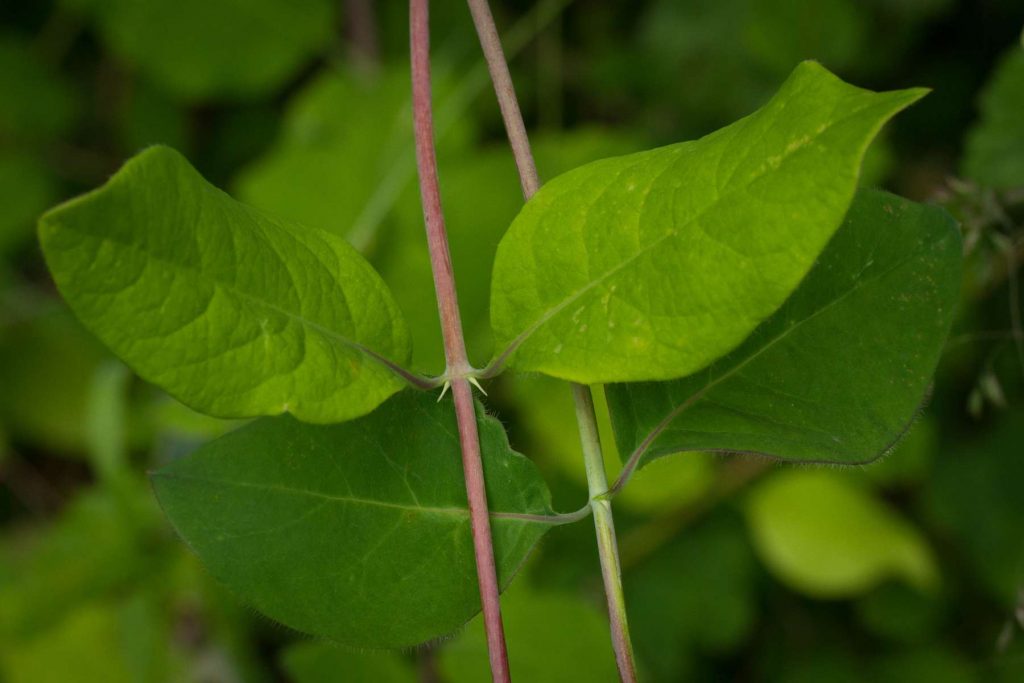
Photo credit: Douglas Fraser

Photo credit: Douglas Fraser
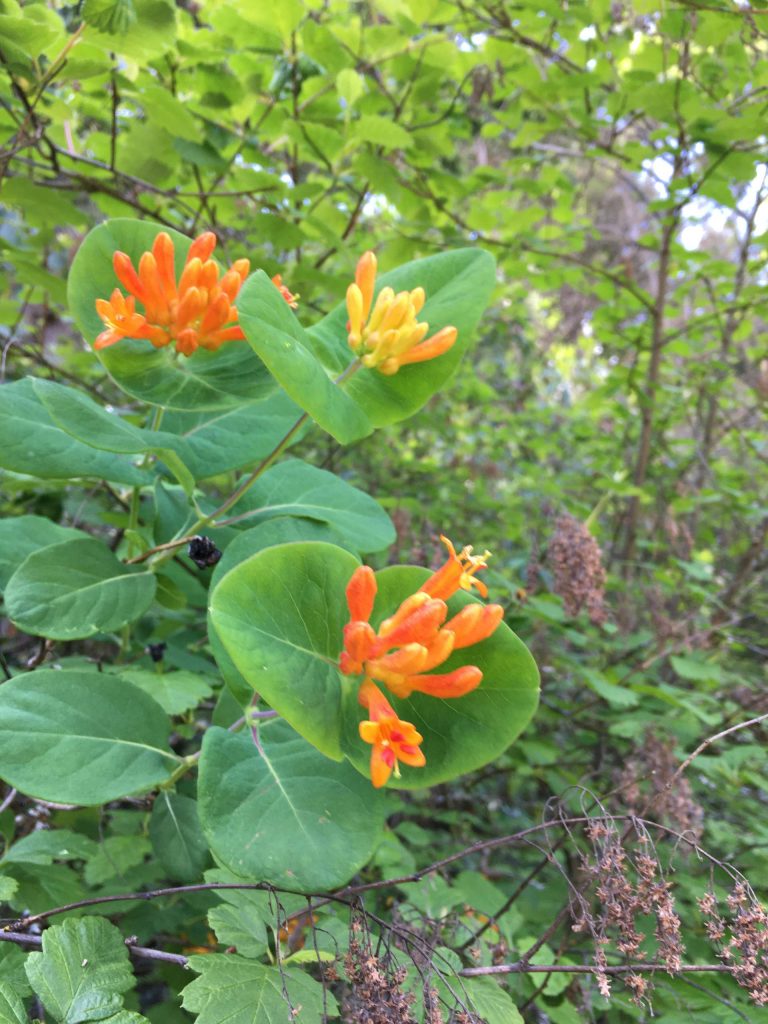

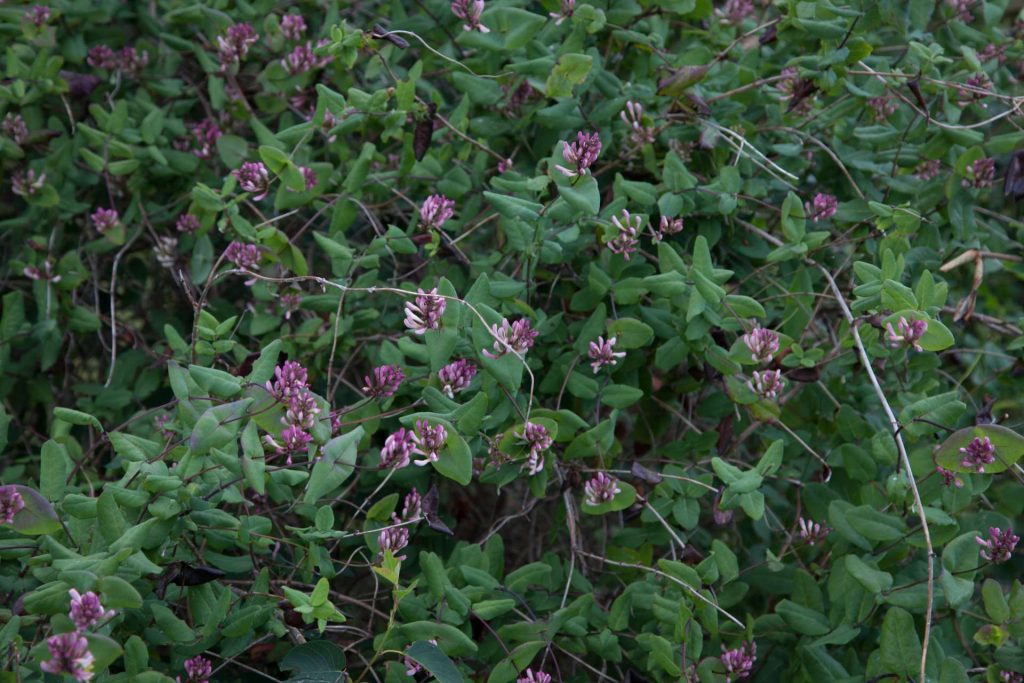
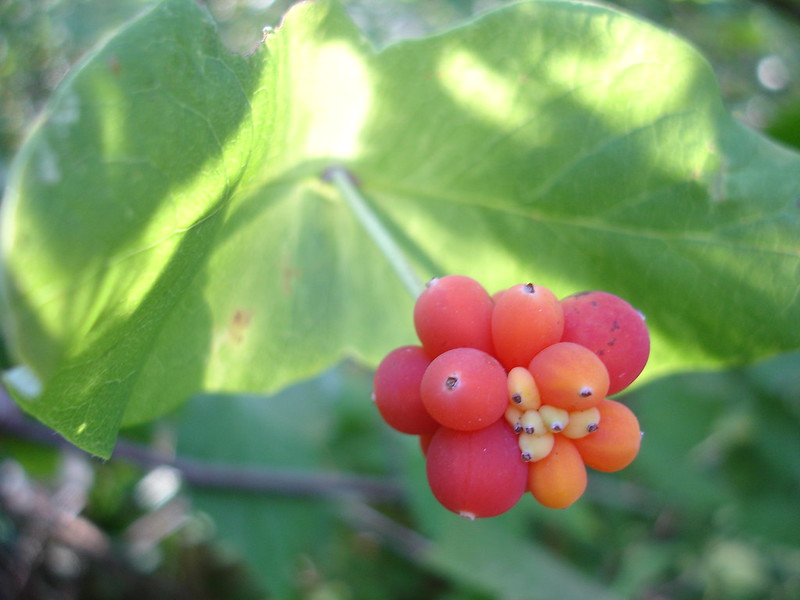
Photo credit: Jackie-Dee via Flickr
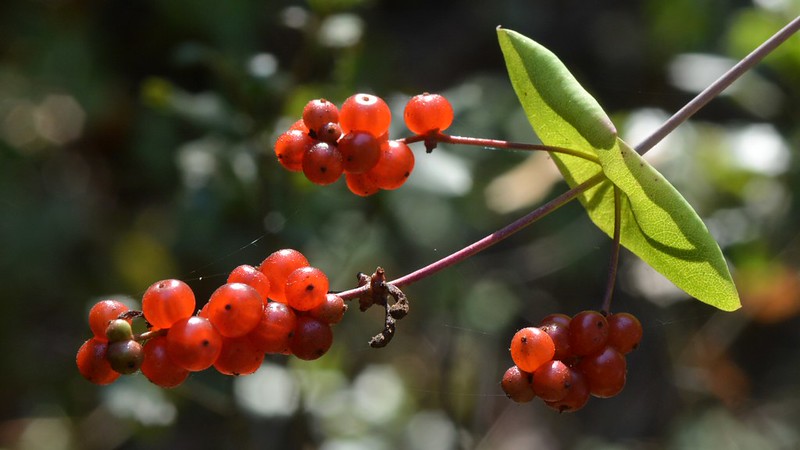
Photo credit: Marc Kummel via Flickr
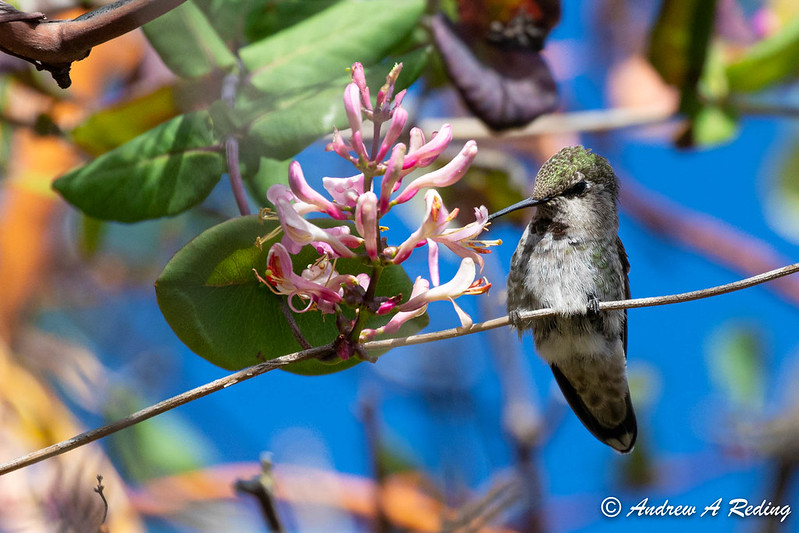
Photo credit: Andrew Reding via Flickr